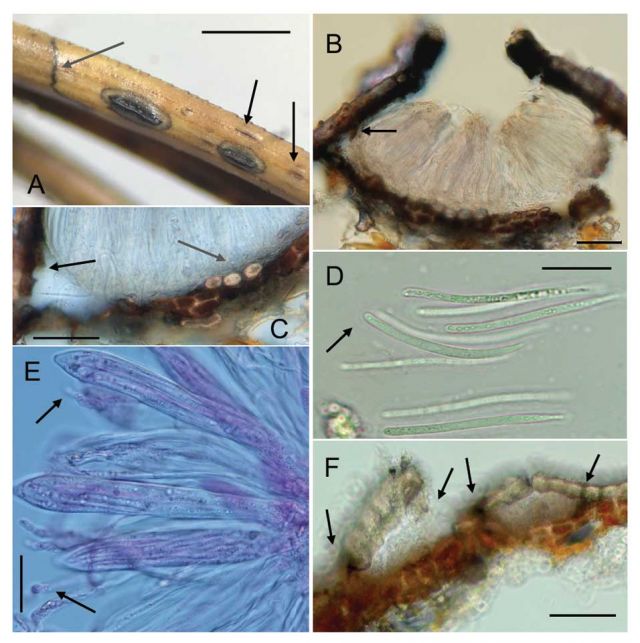
Pine-associated Endophytes
We examine the evolution and ecology of host-specificity between pines needles and fungal endophytes, especially Lophodermium.
Communities of foliar fungal endophytes can be highly variable among plant host individuals across space and time. However, patterns for taxon-specific affinity or host-specificity can still be observed in some plant lineages. We are exploring the host specificity of foliar fungal endophytes associated with the Pinus genus worldwide. We have collections of fungal endophytes from pines of China, Japan, Europe and North America and have mapped host-endophyte relationships across the pine phylogeny. We are focused on understanding evolutionary mechanisms responsible for fungal endophyte diversity using Lophodermium as a model system. Pictured here is a potentially new species Rodolfo and Ryoko found in China.
We created a ShinyApp (v.0.0 Aug. 2022) https://lophodermium-endophyte.shinyapps.io/morph_id/ that allows users to search for Lophodermium species using multiple criteria.
This work was funded by NSF and continues to be supported by collaborations with JGI and EMSL with a FICUS grant.
Relevant work
R Salas-Lizana, L Figuero-Corona, R Oono. Genomic signatures of ancient vicariance in host-specific fungal endophytes across the Soltis Line in the Pacific Northwest. Journal of Biogeography 52:e15139
J Sarver, E Schultz, A Apigo, DS Gernandt, R Salas‐Lizana, R Oono. 2022. Deep sequencing across multiple host species tests pine‐endophyte specificity. American Journal of Botany 109 (1), 83-98
R Salas-Lizana, R Oono. 2018. A comparative analysis of Lophodermium fissuratum, sp. nov., found in haploxylon pine needles in the Pacific Northwest, and other Lophodermium endophytes. Mycologia 110 (5), 797-810